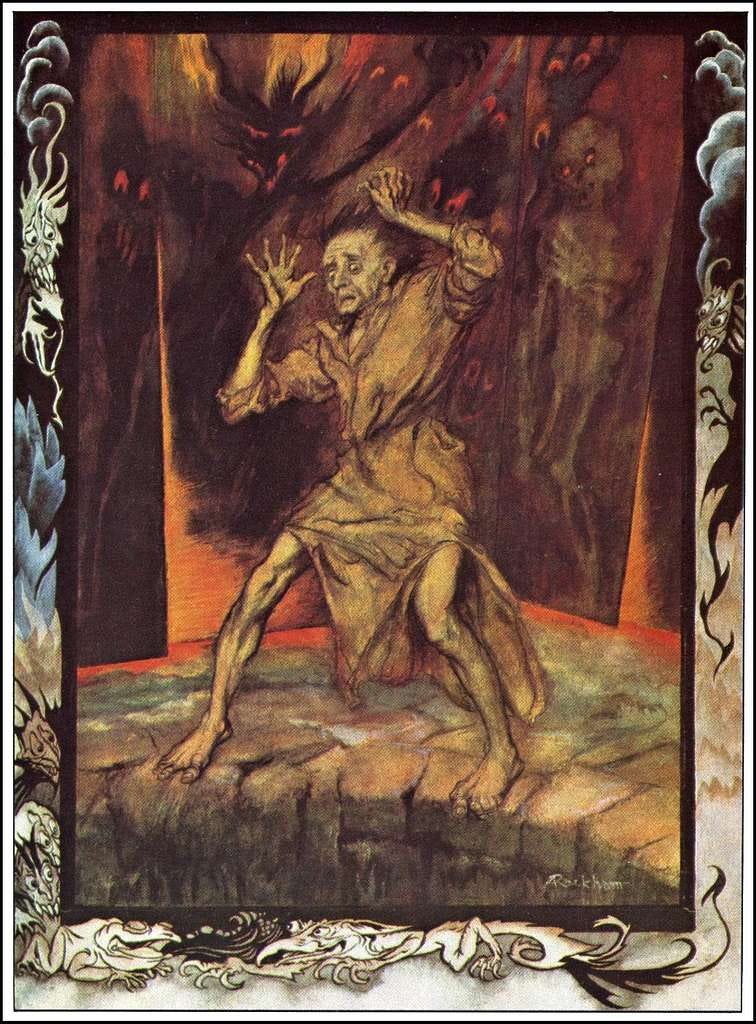Gothic Horror Classics: Edgar Allan Poe
The Power of Description in The TellTale Heart
Edgar Allan Poe used elaborate descriptions to cultivate a growing sense of unease in his stories. From people with questionable sanity to inanimate objects, places,and landscapes these characters and locations are dripping with dreariness and impending doom.

“The TellTale Heart” is one of my favorite examples of Poe’s visceral language and intensely detailed descriptions. He cultivates an atmosphere of creeping dread building to raw psychological terror.
Poe was a master of the macabre. In The “TellTale Heart,” he plunges the reader directly into the mind of some unnamed, unreliable narrator who tells a tale of murder, forcing the reader to live through it, breath by breath, beat by beat.
Using Language to Induce Paranoia
Poe’s first-person narration allows the reader to see every shadow, hear every heartbeat, and feel every paranoid sensation from the protagonist’s point of view. The language drags us into madness, with intense descriptions of sounds and sensations.
“The disease had sharpened my senses—not destroyed—not dulled them.”
Poe uses the narration to illustrate the sensory overload the protagonist experiences as they navigate their guilt and try to resolve the cognitive dissonance churning in their subconscious.
The narration amplifies every sound, sight, and sensation, reflecting the relentless workings of the protagonist’s mind.
As the story progresses, Poe uses auditory imagery to intensify the narrator’s descent. For instance, the “low, dull, quick sound” of the old man’s heart paints a picture of increasing tension, building anxiety, and fear.
Another brilliant use of visceral language is in describing the narrator’s obsession with the old man’s eye.
“the vulture eye,” … “pale blue, with a film over it.”
This obsession eventually becomes a symbol of horror. The word “vulture” conjures images of decay, death, and looming threat. The author’s word choices capture the unnatural appearance of the eye and the narrator’s deep-rooted disgust.
Poe doesn’t have to say that the narrator feels repulsed by the old man’s eye. The description embodies these feelings and alludes to something more.
The author skillfully increases the tension, allowing the narrator’s obsession to escalate. Returning to the eye again and again, Poe emphasizes the grip this unhealthy obsession has on the narrator’s mind.
Sound as a Tool of Terror
I find one of the most chilling aspects of “The TellTale Heart” is Poe’s strategic use of sound. In the story’s climax, the narrator describes the heartbeats that seem to echo through the room, growing louder with every second.
“It grew louder—louder—louder!”
At this point, the beating heart is likely a hallucination, an auditory manifestation of guilt. The repetition of “louder” builds a frantic tempo, mirroring the narrator’s panicked state and creating a sensation of mounting dread.
Poe doesn’t tell us outright that the narrator feels guilty. Instead, the obsessive heartbeat drives the point home, showing us the madness that guilt has instilled within them.
We experience the narrator’s psychological collapse through a powerful auditory hallucination capturing the weight of his conscience as he exclaims,
“I admit the deed!—tear up the planks! Here, here!—it is the beating of his hideous heart!”
Visual and Tactile Language of Madness
Poe’s descriptions also tap into visual and tactile sensations. For instance, when the narrator enters the old man’s room, he describes “a single dim ray, like the thread of the spider,” seeping into the darkness and illuminating the eye.
This delicate comparison—the thread of a spider—adds an eerie beauty to the scene. By choosing such a vivid, almost tender image, Poe brings out the narrator’s conflicting combination of love and hate, creating an uncomfortable tension.
The author’s tactile language intensifies the horror when the narrator details the methodical process of concealing the body. They describe “cutting up the corpse.” Instead of simply saying, they hid the body. The grim description immerses us in the grotesque act itself.
Such wording emphasizes the narrator’s detachment and lack of remorse, as if he’s merely performing a routine task. These descriptive choices allow the horror of the act to resonate with no overt statements needed about the protagonist’s emotions.
Language as a Conduit of Uncertainty
Poe didn’t rely on explicit statements about the narrator’s insanity or guilt. His visceral descriptions and sensory language embody these qualities, dragging readers into the story, making them feel each tremor, heartbeat, and gaze.
By showing rather than telling, Poe creates a story that is a journey into madness. Through every description, he underscores the horrors of the crime, and the creativity of the mind as it works to reconcile these murderous acts as redeemable.




